Barbentane
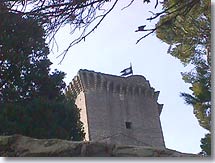
Barbentane is situated at the northernmost point of the departement of Bouches du Rhone, on the border with Vaucluse and Gard, where the River Durance flows into the Rhone.
Built on the slopes of La Montagnette, Barbentane stands magnificently above the fertile plain and market gardens which line the Rhone.
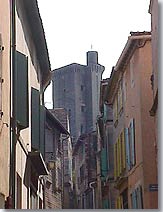
As you arrive in Barbentane you will see the Anglica Tower which dominates the village from a height of 28 metres and is crowned by a round turret.
Constructed in 1365, it was the keep of the episcopal château. It remains an important example of Mediaeval architecture and is listed as a historic monument.
Frédéric Mistral sang about the Anglica Tower in the "Iscles d'Or.
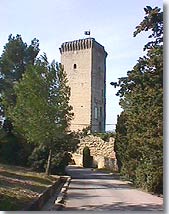
As was the custom in the Middle Ages, the episcopal château was surrounded by a fortified wall, of which only two gates remain today:
- the Porte Calendale which dates from the Middle Ages (1302) and commands the entrance to the northern ramparts,
- the Porte de Seguier at the southern entrance to the ramparts(from the Provençal word “seca” which means “to dry”: the peasants used to put their vegetable harvest to dry in the rue Séquier so that they would have something to eat in the winter).
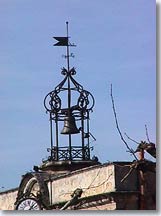
At the heart of the village you will see the 12th-century Romanesque church which is listed as a historic monument and boasts a lovely bell tower and a porch in the shape of a chimney breast.
Next to the church you will see the Maison des Chevaliers (Knights' House) which is also a listed building.
This venerable residence dates from the 12th century, with some alterations and additions made in the 15th century.
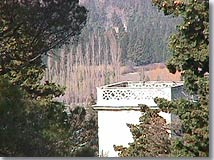
Lower down you will find the elegant 17th-century Château de Barbentane. The style of the architecture recalls the stately homes of the Ile de France in the Paris region and remains faithful to the rules of Classicism. The construction of the Château de Barbentane was started in 1674 by Paul François de Barbentane (later premier consul of Aix) but it was only completed at the end of the 18th century. This chateau, also known as the “Petit Trianon du Soleil” is the home of the Marquis de Barbentane.
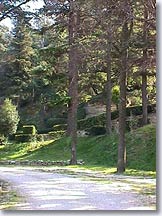
It is to Joseph Pierre Balthazar de Puget, who was Marquis de Barbentane and Louis XV’s ambassador to Florence, that the splendid reception rooms owe their sumptuous decoration (inspired by Italian styles).
They are ornamented with plasterwork and Carrare marble which show off the château’s Louis XV and Louis XVI furniture to great advantage. Having miraculously survived the 1789 Revolution, the house is still inhabited today by the Marquis de Barbentane.
Outside, terraces lined with stone balustrades and sculptures open on to a magnificent park.
What to see
Chateau de Barbentane (open from Easter to the beginning of November).
Maison des Chevaliers (12th century). Romanesque church (12th century).
Anglica Tower (14th century). Moulin de Bretoule (Bretoule Mill).
Porte de Sequier. Porte Calendale)
Maison des Chevaliers (XII°)
Eglise romane (XII°). Tour Anglica (XIV°)
Moulin de Bretoule. Porte de Sequier. Porte Calendale.
Leisure activities
Market on Friday mornings.
Walking, mountain biking and horse riding (La Montagnette State Forest).
Hot-air balloon trips Bike hire. Tennis. Golf.
Night club Exhibitions and summer events.
Accomodations
Hotels.
Holiday rentals. Gites.
Bed and breakfast.
Restaurants.
NEIGHBOURING TOWNS AND VILLAGES
Rognonas (5km), Châteaurenard (11km), Graveson (12km) et Maillane (15 km).

